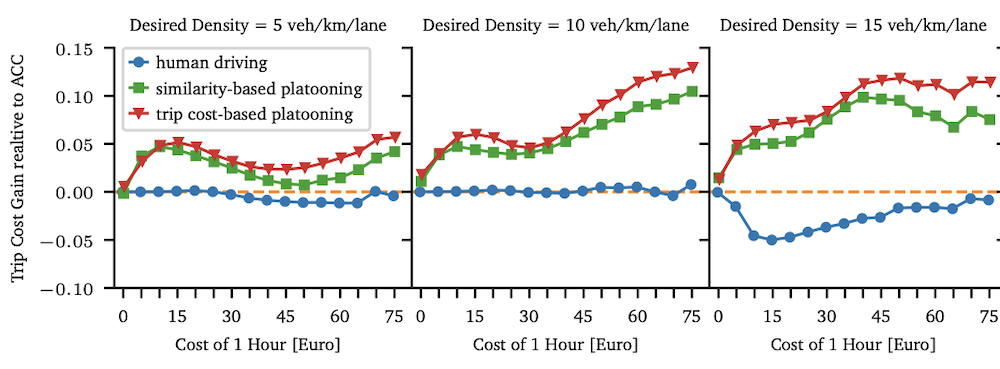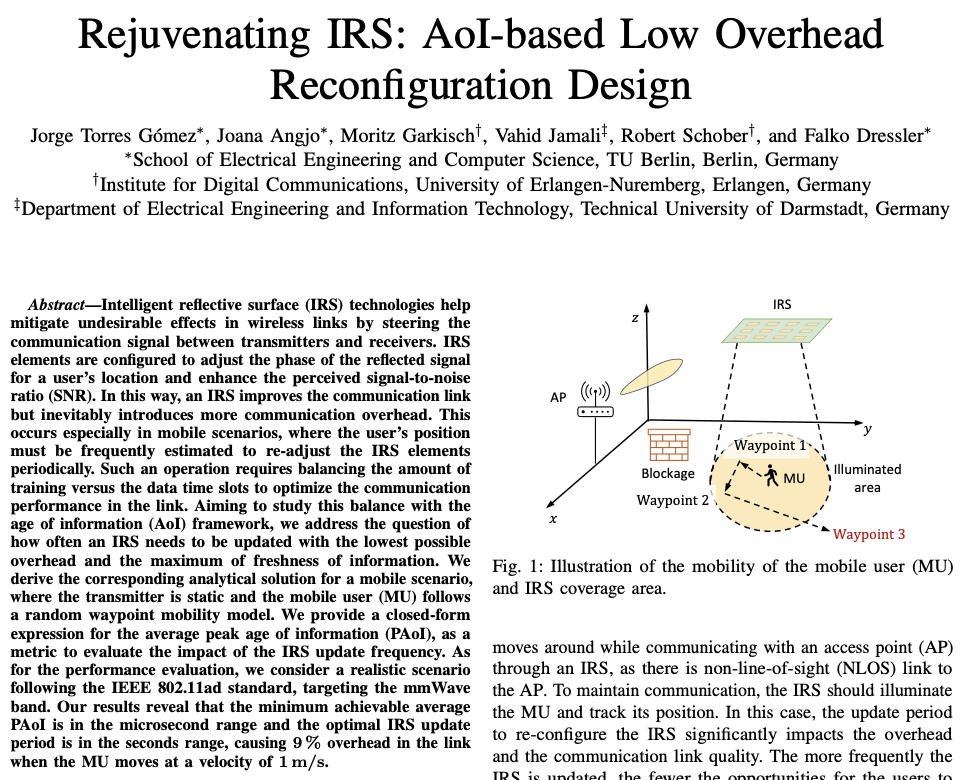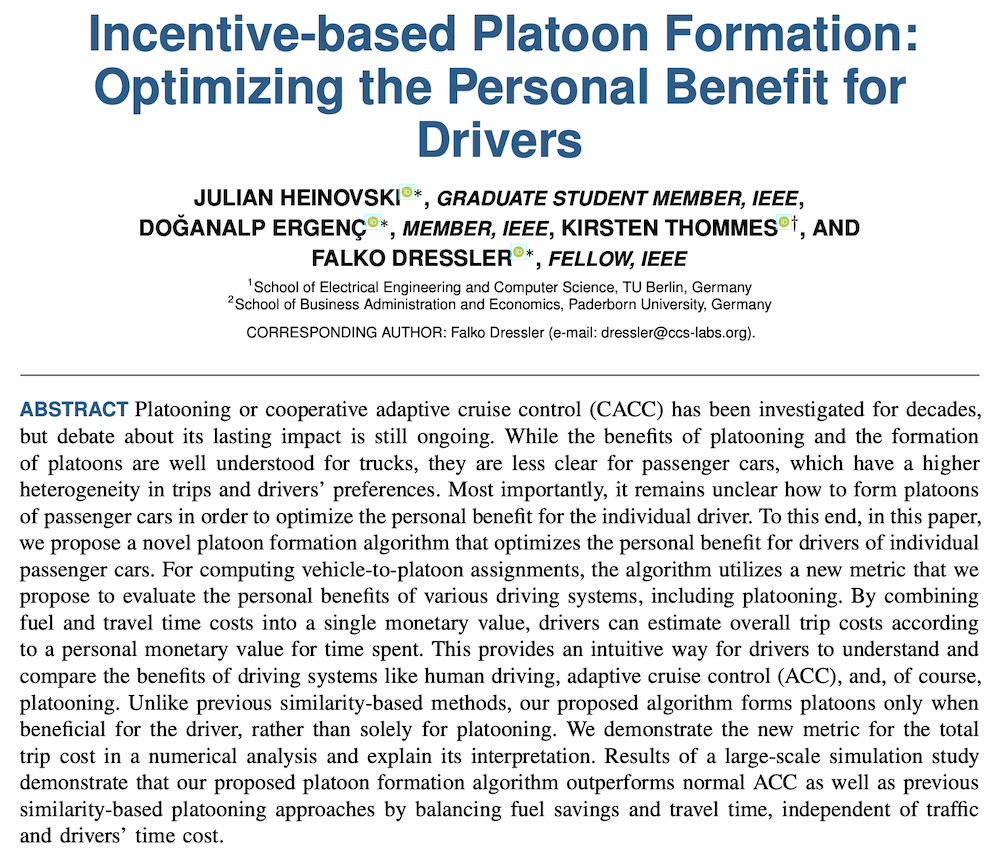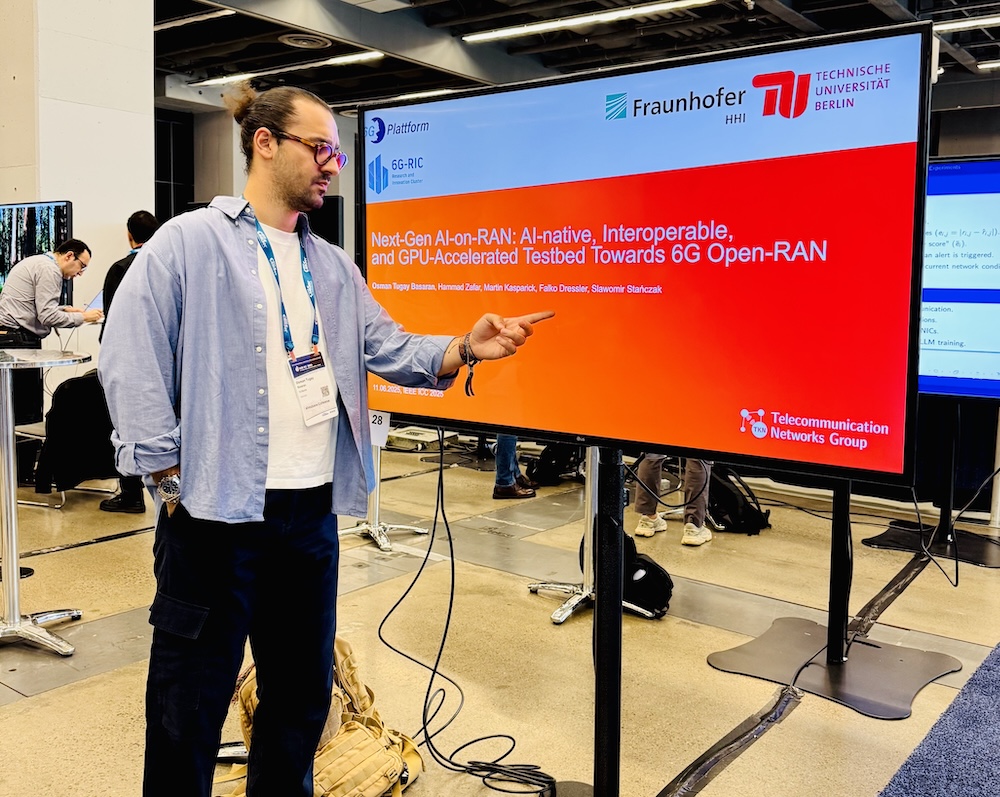Literature Database Entry
buse2023towards
Dominik S. Buse, "Towards Holistic Real-time Simulation of Cooperative Vehicles," PhD Thesis, School of Electrical Engineering and Computer Science (EECS), TU Berlin (TUB), May 2023. (Advisor: Falko Dressler; Referees: Falko Dressler, Christoph Sommer, Thomas Engel and James Gross)
Abstract
Wireless networking technology can enable future cars to cooperate through Vehicle-to-Everything (V2X) communication, increasing safety, comfort, and efficiency. This heralds a paradigm shift: from isolated entities, primarily interacting through their drivers, to networked elements of smart cities. But this paradigm shift requires new ways to develop and test such interconnected systems. Simulation tools of different domains need to be integrated to provide such a holistic simulation environment. But currently there is a gap between the highly-detailed, real-time testbeds like Hardware-in-the-Loop (HIL) and the large-scale, event-based network simulators for V2X. Our goal is to bridge this gap and combine tools of both domains into a co-simulation. We want to ensure real-time computation of V2X models for the inclusion of physical components or human users. And we aim to push the limits of wireless simulation on modern multi-core processors to enable running larger scenarios in real-time. We present our contributions in three parts: First, we introduce the Ego-Vehicle Interface (EVI), to bridge the gap between simulation tools of different domains into a layered co-simulation. The EVI coordinates the co-simulation and ensures that non-real-time simulators provide results far enough ahead of time for real-time components to run uninterrupted. This enables the combination of real-time systems, such as HIL setups, with large-scale traffic and event-based wireless simulation for V2X applications. Second, we investigate how V2X simulation can be ensured to run within these real-time bounds when focusing on an ego vehicle. By identifying and dynamically selecting the relevant set of neighboring vehicles, we demonstrate how to reduce the simulation to indispensable elements and limit compute time. And through simulation studies we explore the limits of the scale current hardware can process in real-time. Third, we expand these limits by improving the performance of V2X simulation through the utilization of modern multi-core processors with a new parallelization technique. As classical techniques do not perform well on the shared wireless channel, we instead focus on isolating and offloading expensive computation tasks like signal processing to background threads. In an in-depth case study using the state-of-the- art V2X simulator Veins, we describe how we identified potentials, implemented our parallelization concept, and thoroughly investigated the resulting parallel performance.
Quick access
Contact
BibTeX reference
@phdthesis{buse2023towards,
author = {Buse, Dominik S.},
title = {{Towards Holistic Real-time Simulation of Cooperative Vehicles}},
advisor = {Dressler, Falko},
institution = {School of Electrical Engineering and Computer Science (EECS)},
location = {Berlin, Germany},
month = {5},
referee = {Dressler, Falko and Sommer, Christoph and Engel, Thomas and Gross, James},
school = {TU Berlin (TUB)},
type = {PhD Thesis},
year = {2023},
}
Copyright notice
Links to final or draft versions of papers are presented here to ensure timely dissemination of scholarly and technical work. Copyright and all rights therein are retained by authors or by other copyright holders. All persons copying this information are expected to adhere to the terms and constraints invoked by each author's copyright. In most cases, these works may not be reposted or distributed for commercial purposes without the explicit permission of the copyright holder.
The following applies to all papers listed above that have IEEE copyrights: Personal use of this material is permitted. However, permission to reprint/republish this material for advertising or promotional purposes or for creating new collective works for resale or redistribution to servers or lists, or to reuse any copyrighted component of this work in other works must be obtained from the IEEE.
The following applies to all papers listed above that are in submission to IEEE conference/workshop proceedings or journals: This work has been submitted to the IEEE for possible publication. Copyright may be transferred without notice, after which this version may no longer be accessible.
The following applies to all papers listed above that have ACM copyrights: ACM COPYRIGHT NOTICE. Permission to make digital or hard copies of part or all of this work for personal or classroom use is granted without fee provided that copies are not made or distributed for profit or commercial advantage and that copies bear this notice and the full citation on the first page. Copyrights for components of this work owned by others than ACM must be honored. Abstracting with credit is permitted. To copy otherwise, to republish, to post on servers, or to redistribute to lists, requires prior specific permission and/or a fee. Request permissions from Publications Dept., ACM, Inc., fax +1 (212) 869-0481, or permissions@acm.org.
The following applies to all SpringerLink papers listed above that have Springer Science+Business Media copyrights: The original publication is available at www.springerlink.com.
This page was automatically generated using BibDB and bib2web.






